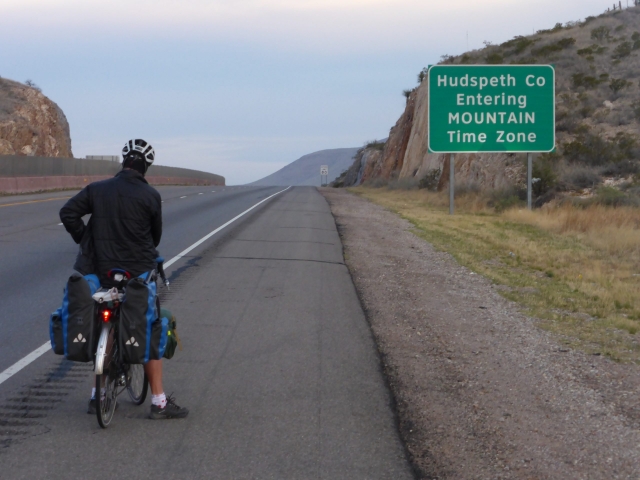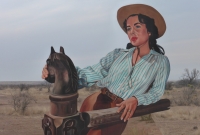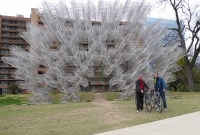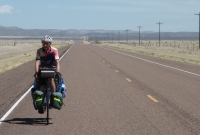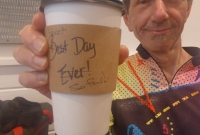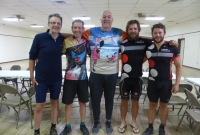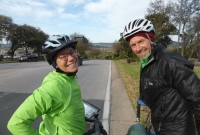Van Horn only looks good in your rear view mirror. Preferably in the dark. That’s how we left the mile long strip of cheap motels and auto repair garages. Activity on the adjacent trainline provided a welcome distraction from the early hour of our departure.
After the early morning express had trundled through at walking pace (for 15 minutes!) a dozen or so little maintenance machines scuttled back up the line like so many yellow ants, each with a powerful headlight. We followed their lead out of town, wondering where they were going, what they going to do when they got there, and how the hell were they going to get out of the way of the next train!

Out of town, we were now cycling on Interstate 10. Riding a bike on an Interstate is usually forbidden, but there are a few sections in the U.S. where it is permissable to cycle on the shoulder if there is no other possible route, so we continued on, climbing up towards the Hudspeth county line.
As if to confirm we were gaining altitute we also crossed into a new time zone – Mountain Time. I glanced at my phone – 8.15am had miraculously reverted to 7.15am – we’d gained an hour on the sun! With more than 70 miles to cover today this was great news – and what’s more we also had a tailwind to boot.
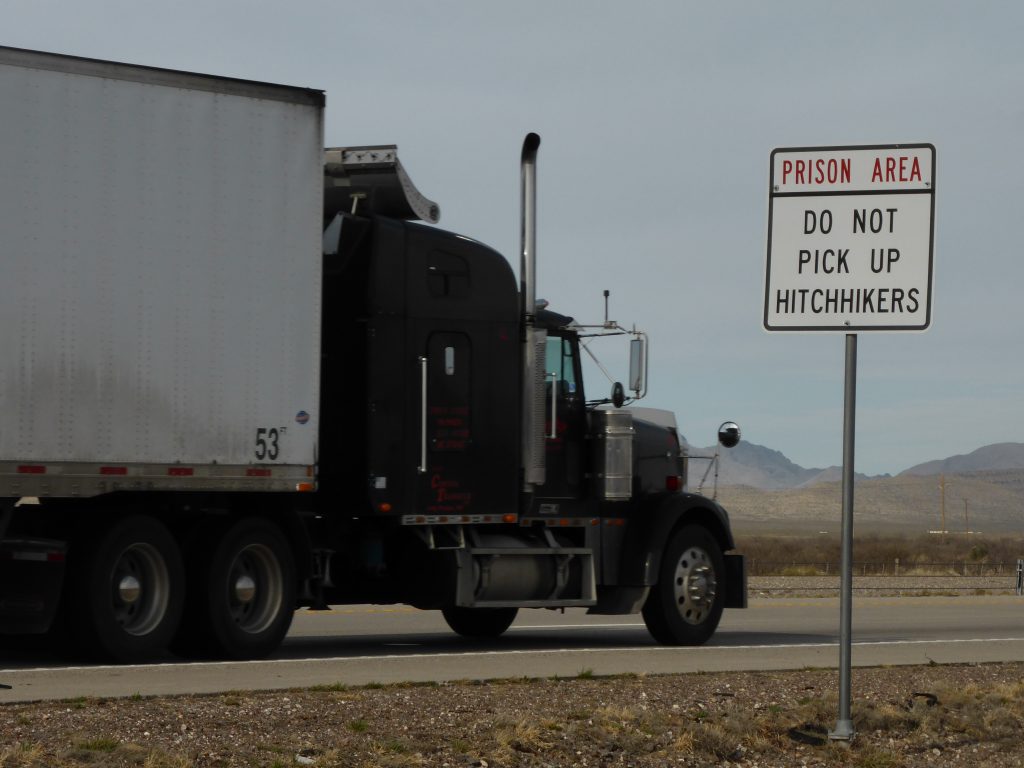
We began tackling a 1,000ft climb that would take us into the next valley. The hills closed in around us as we reached the pass. Terry commented that it looked very much like a Lake District landscape with all the crags up close and personal, although sadly there were no cake shops or pubs and Wordsworth would have been disappointed at the distinct lack of daffodils.
Looking back, the sun was coming up through the peaks, giving everything a pinkish hue … even on the 6,890ft summit of Sierra Blanca, the highest mountain in the area and still a way ahead of us.
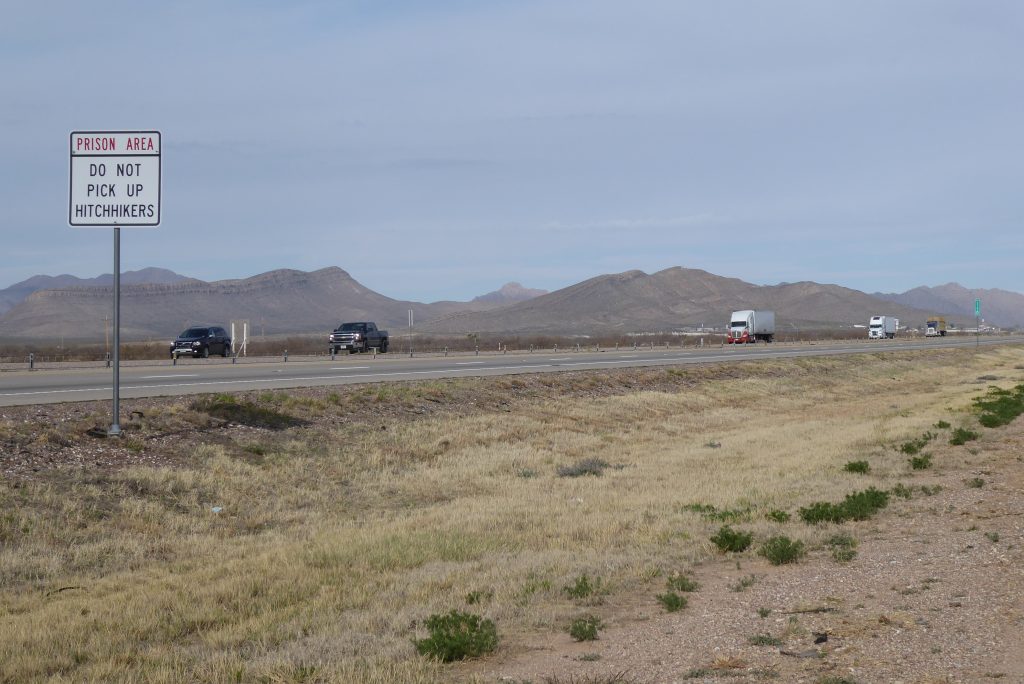
At one point we stopped to watch one of the giant freight trains being worked on and saw hares, much greyer than the ones in the UK, darting across the undergrowth. Dropping out from between the mountains we were once again riding in an expansive valley tens of miles wide with the Malone and Quitman Mountains before us. The views were on a scale that were almost too big to take in – and certainly next to impossible to capture on camera.
“We pootled along, waving at the truck drivers who gave us encouraging toots on their horns”.
Allamore, marked by the tall white towers of a mineral processing plant, is where we swapped the i-10 for the ‘frontage road’ that ran beside it. Blissfully traffic, but not noise free we pootled along, waving at the truck drivers who gave us encouraging toots on their horns or perhaps they were just glad we weren’t in their way?
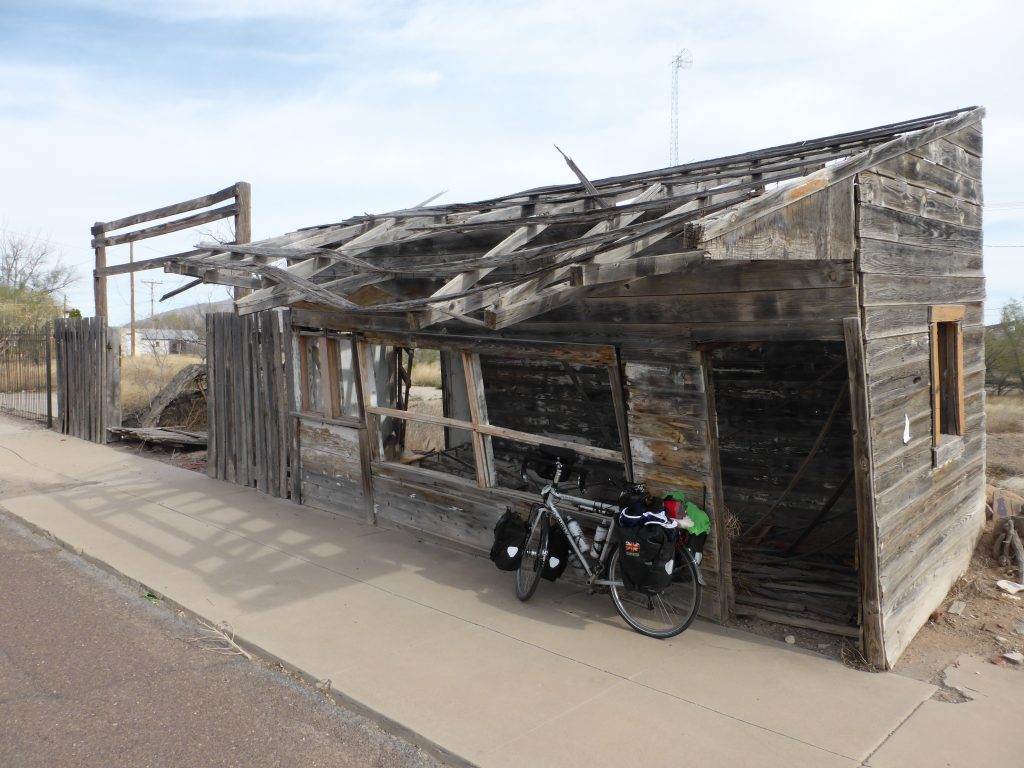
Consulting our maps, Sierra Blanca (the town this time) was our planned coffee stop. The signs promised history, restaurants and much much more, so passing up on the ever present gas station we went looking for that small independent cafe with lattes and cinnamon swirls, eager to explore. It turned out the town was a bit like the Marie Celeste … mostly intact, but completely empty, so we turned about and headed back to the gas station – the only place where food and drink, in fact where anything at all was available.
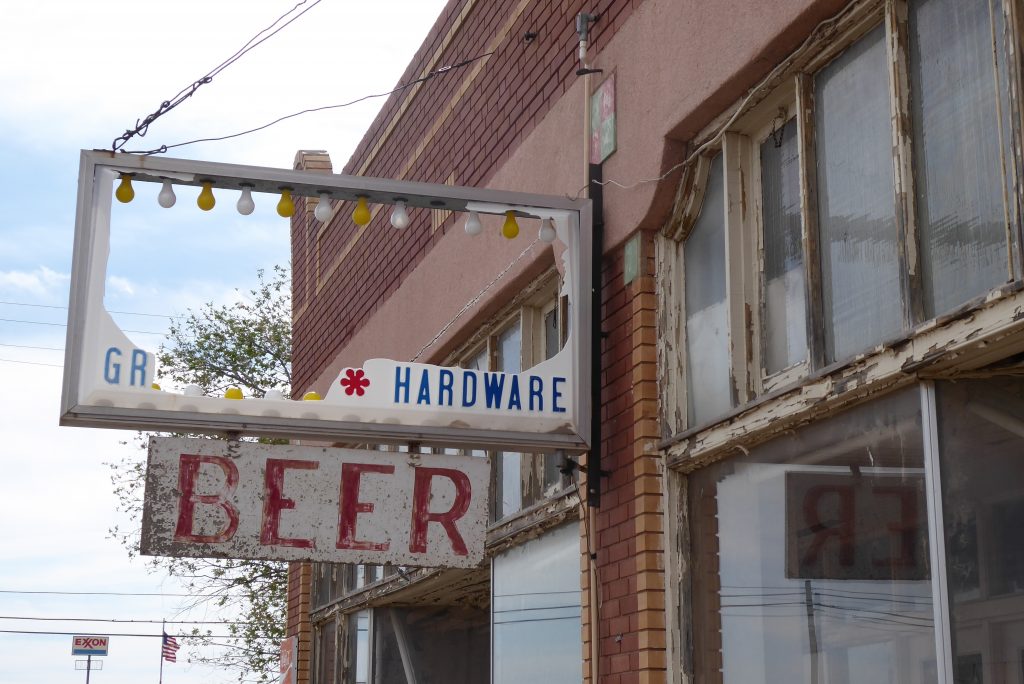
The extraordinary thing is that around 140 years ago everyone had been racing to get to Sierra Blanca. Now it seemed everyone couldn’t wait to get out. The town came into being as the place where the nation’s second transcontinental railway, taking a southern route across the States, was completed.
“The railroad teams ran a dramatic race with the Southern Pacific reaching Sierra Blanca on November 25, 1881”.
In 1869 The Southern Pacific began constructing a line eastwards from the west coast, joined shortly afterwards in 1871 by the Texas and Pacific, which began its route west from East Texas to Southern California. The railroad teams ran a dramatic race with the Southern Pacific reaching Sierra Blanca on November 25, 1881. The Texas and Pacific crews at that point were only ten miles to the east.

The lines were finally joined on December 15th 1881 and the day after the southern transcontinental service was inaugurated. Building on this success Sierra Blanca, named after the mountain, had once been home to hotels, stores, numerous garages and a bustling railway depot. You could learn all about it at the Hudspeth County Railway Depot Museum, but only if you were in town on a Wednesday, which we weren’t.
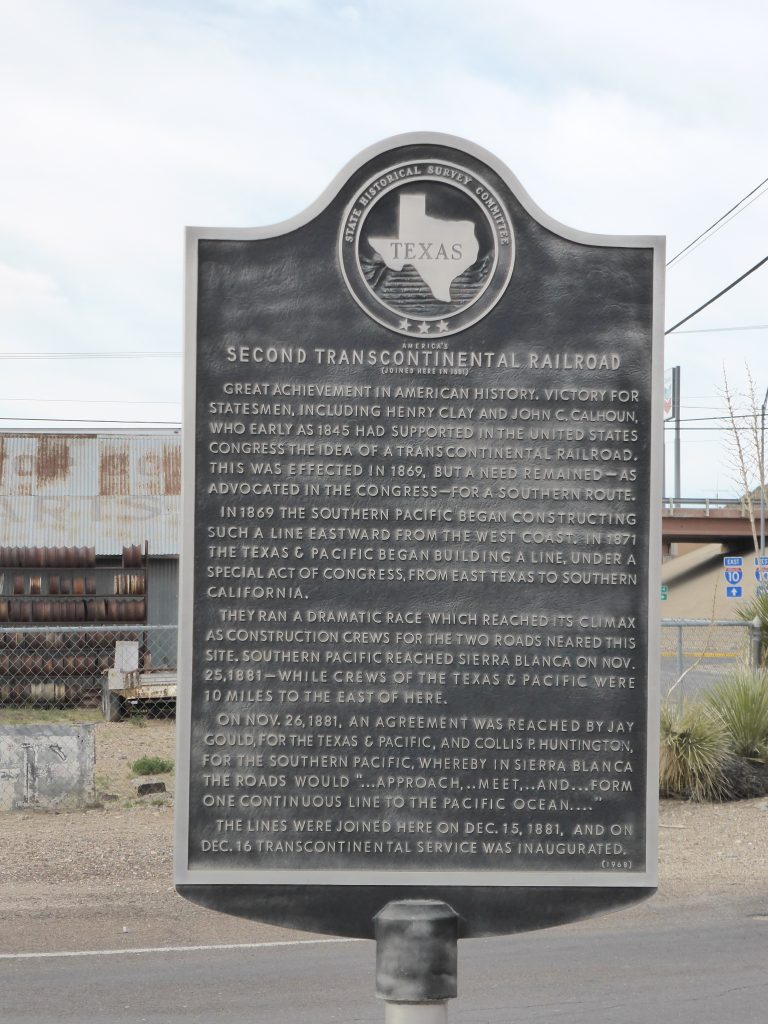

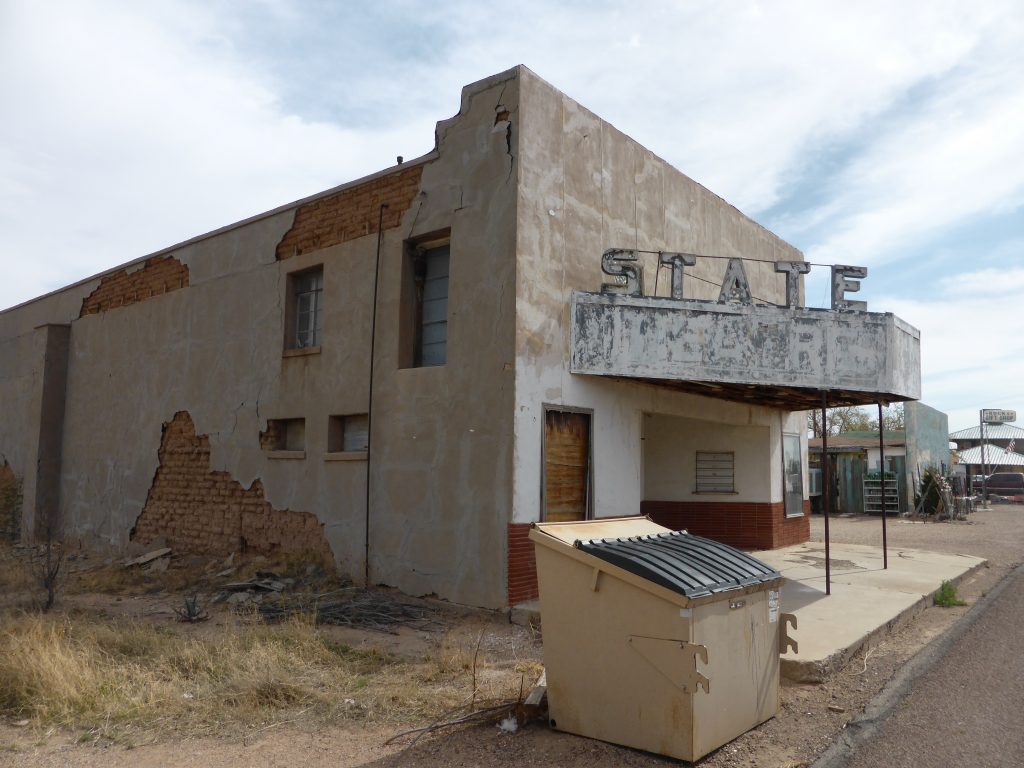

At least the museum building still appeared to be functioning, which was more than you could say for the rest of the town. We cycled past cafés, hotels, liquor stores, a cinema, truckstops and restaurants which had once formed the backbone of a vibrant town, but now stood in various states of decay. Some looked like they closed just a few years back, others had given up the ghost long ago. It all felt a bit spooky.
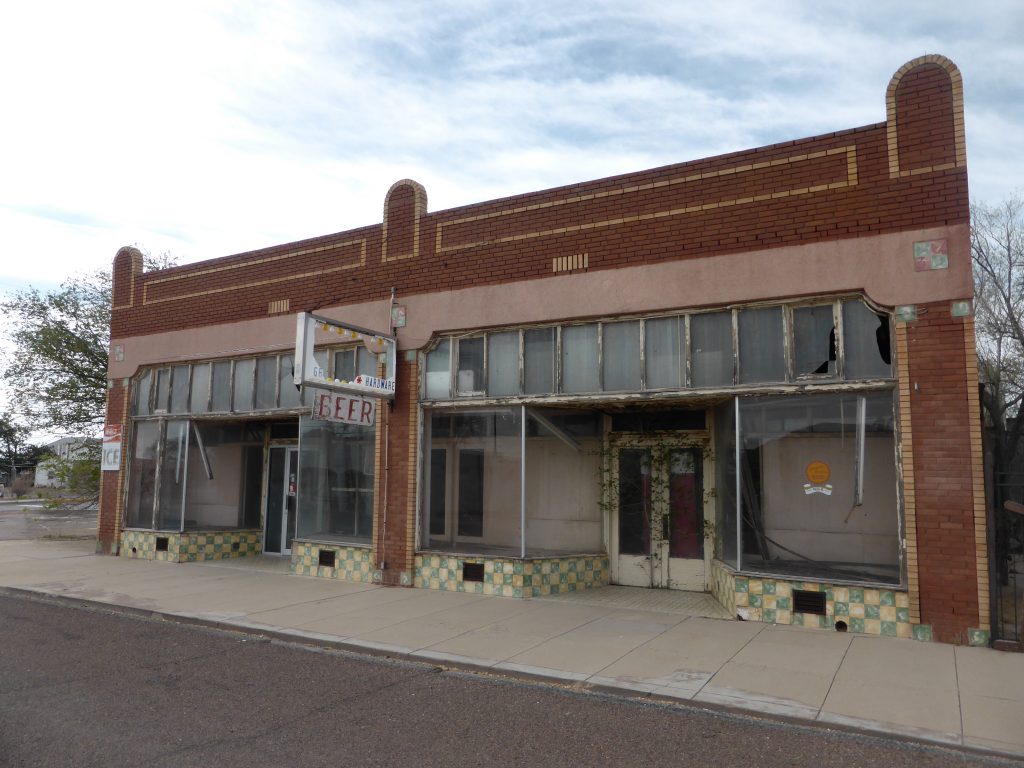

The story was all too familiar – first the railroad had brought life to the town. Then the steam trains upgraded to diesel locos, so no longer needed to stop for a gulp of water and then the main road through town had been bypassed by the I10. Now most people just flew past on the Interstate with barely a glimpse at what had once been a bustling community.
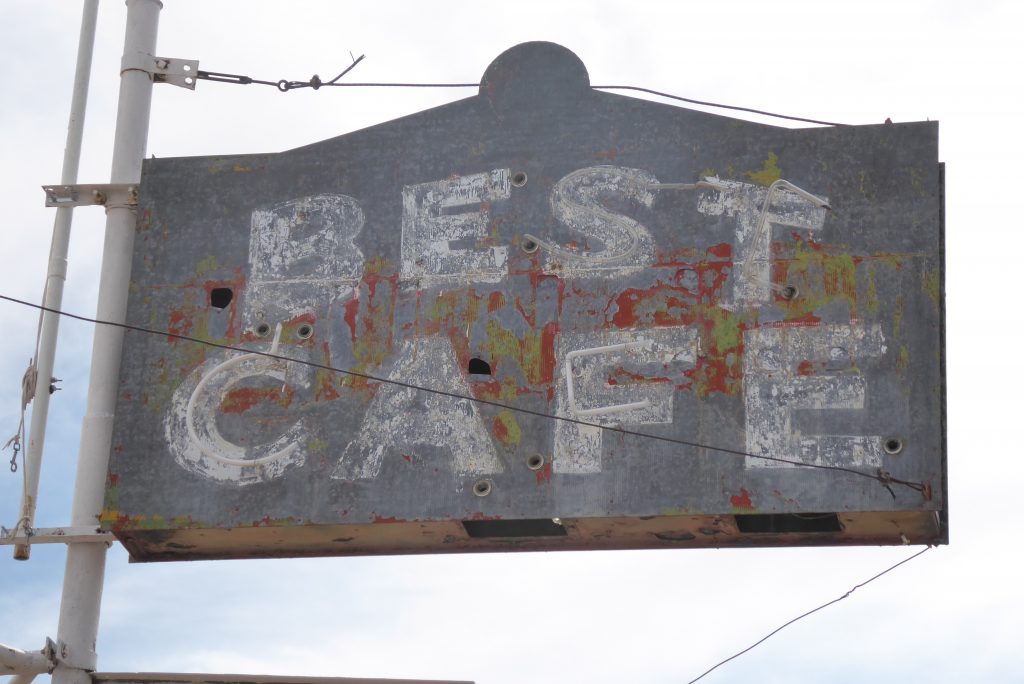
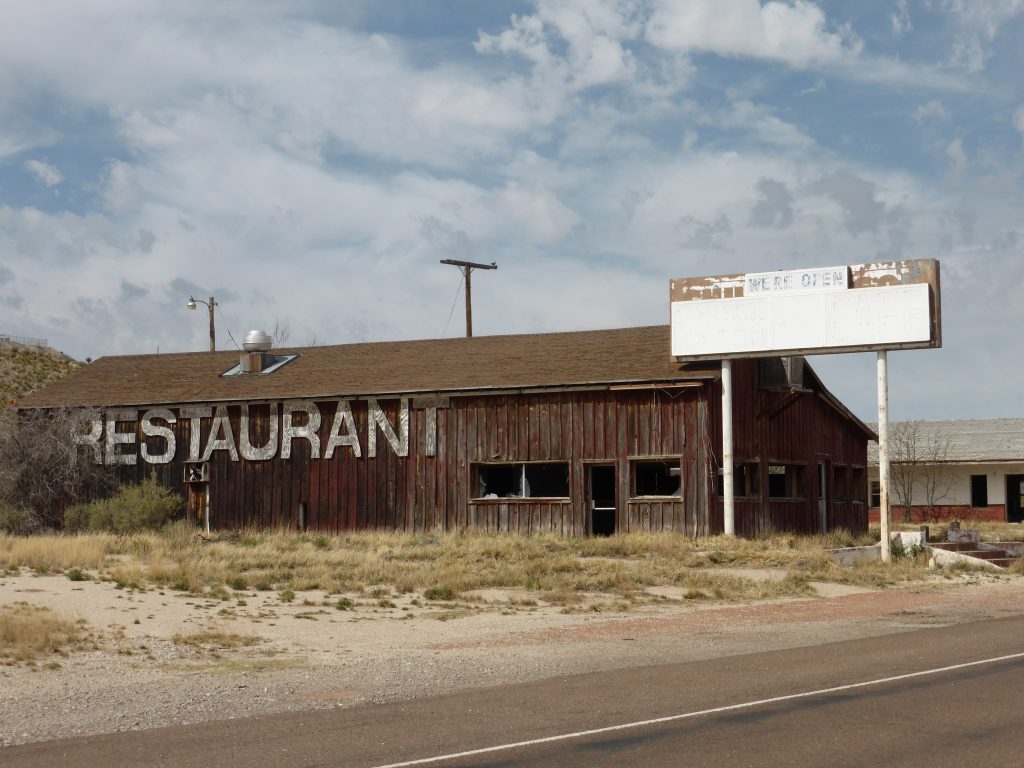

The town still boasted a bank, Post Office and Fire Station, but where was everyone? The ACA maps show the population of Sierra Blanca standing at 658. We met a couple of people serving in the gas station, but the rest of the townsfolk must have been hiding in the ruins. Perhaps in a few years the town will just shrug its shoulders and give up. All that will remain will be an historical marker detailing it as a footnote in the history of the railroad.
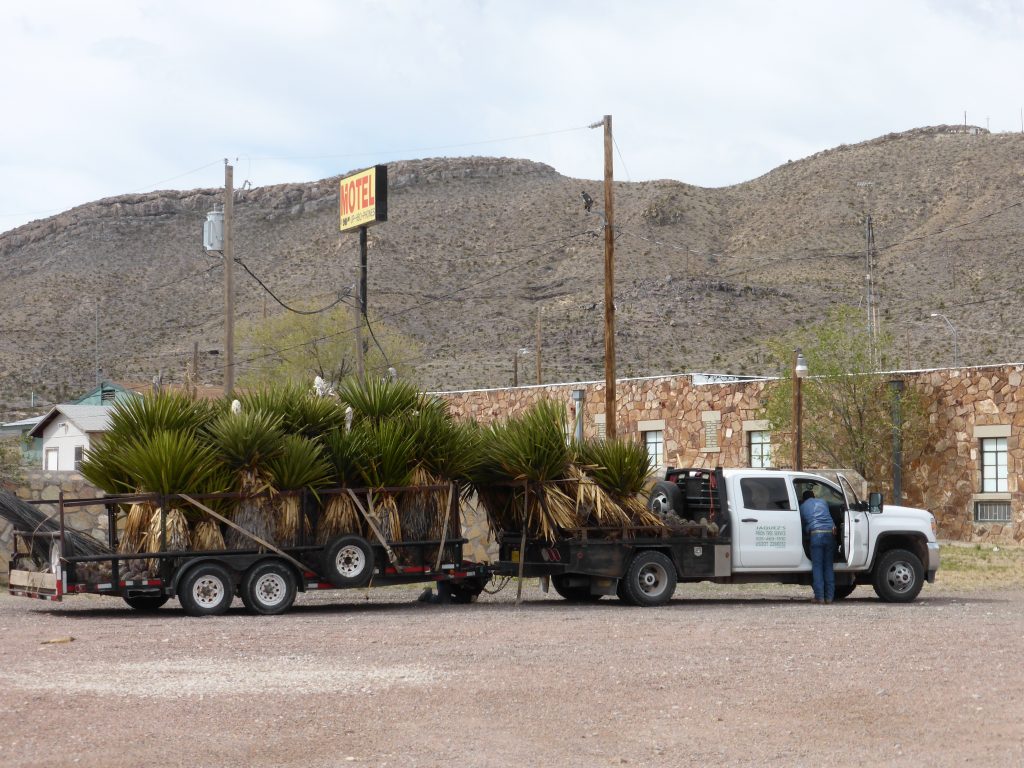
Leaving the town to its memories we continued on along the frontage road, passing one of numerous Border Patrol Stations we’ve seen over the past week. We weren’t stopped, unlike most of the other traffic.
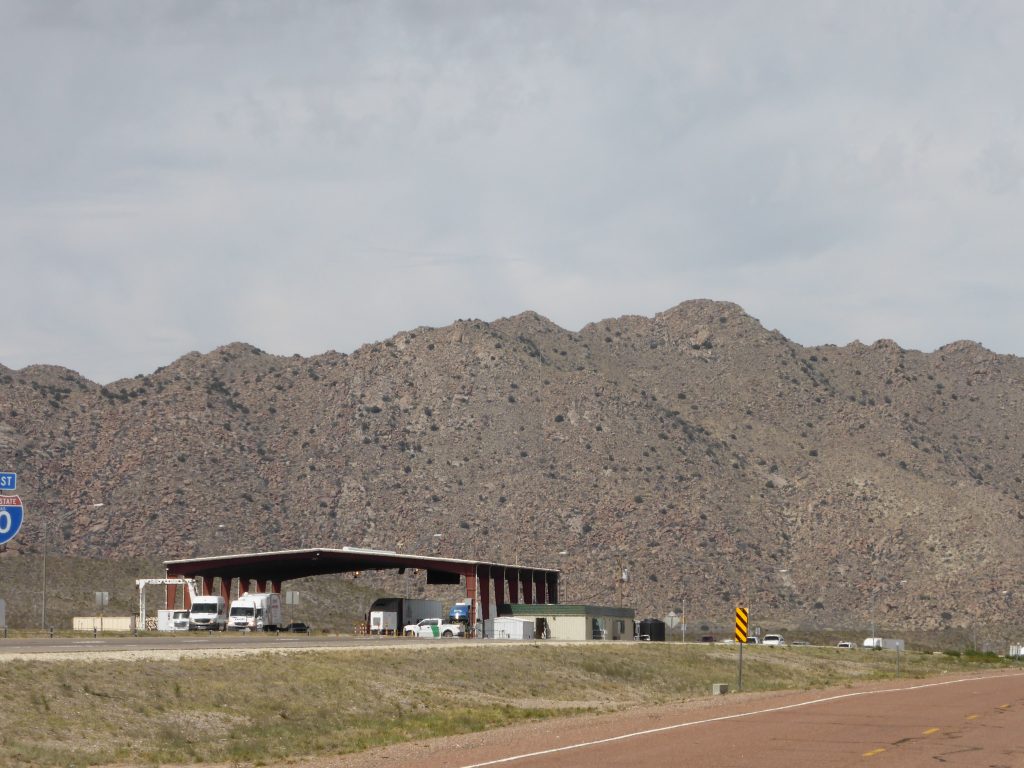
The green and white border patrol vehicles are a regular sight on these roads and at least half a dozen have passed us everyday recently. We’ve not seen any evidence of anyone being picked up trying to cross the border, but on the evening we stayed with Bubba and his Pedalers they had been due to tour the Sanderson Border Patrol Station, but the detention of more than 30 people had seen the visit being cancelled.
We found ourselves once again facing the ignomy of pedalling while going downhill”.
One thing that has constantly surprised us during the Southern Tier is how quickly the wind can change direction. All the way to our coffee stop we’d been blessed with a tailwind, but now the roles were reversed. After a lunch of peanut butter bagels with cheese (we are really ripping up the culinary rule-book!) we found ourselves once again facing the ignomy of pedalling while going downhill.
So when we spotted a young cyclist coming uphill towards us and pulling a bob trailer we were only too keen to stop for a chat.
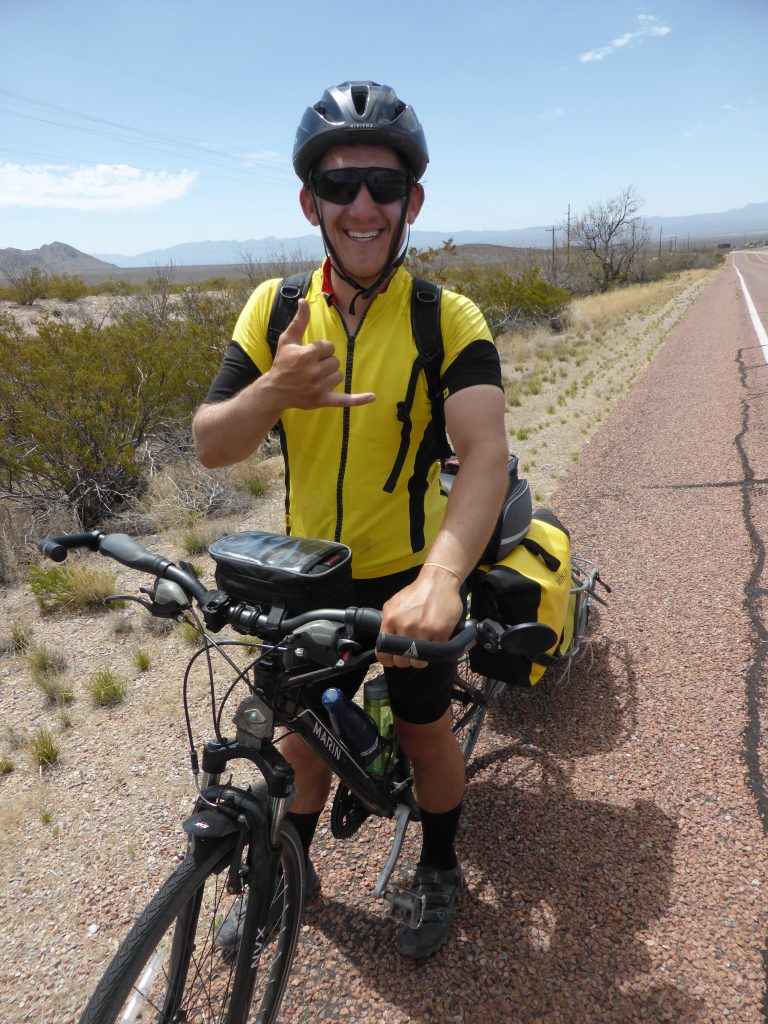
Ben, from Phoenix, was riding the Southern Tier west to east and had spent the previous night drinking with Louis and Lloyd and staying with a Warmshowers host, Mary, about ten miles beyond Fort Hancock. We had considered staying there ourselves, but the headwind had put pay to an 80 plus mile day. Ben was all smiles and teeth, had given up his job to go travelling and was keen to explore the world while he was still young without commitments. He was even trying to persuade his parents to become Warmshowers hosts.
We were still riding on the I10 access road, which run parallel to the carriageway, but the ACA maps indicated our road would end soon. So, spotting a gap in the cable fence running down the middle of the interstate, we dashed across and rejoined the hard shoulder on the west-bound carriageway.
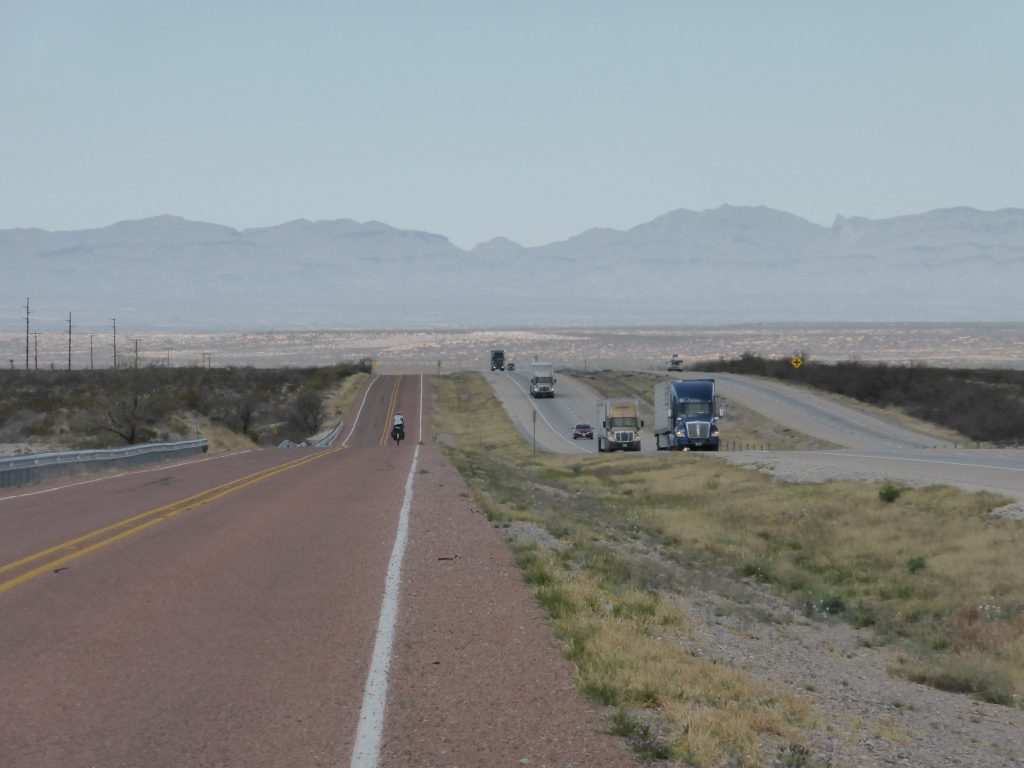
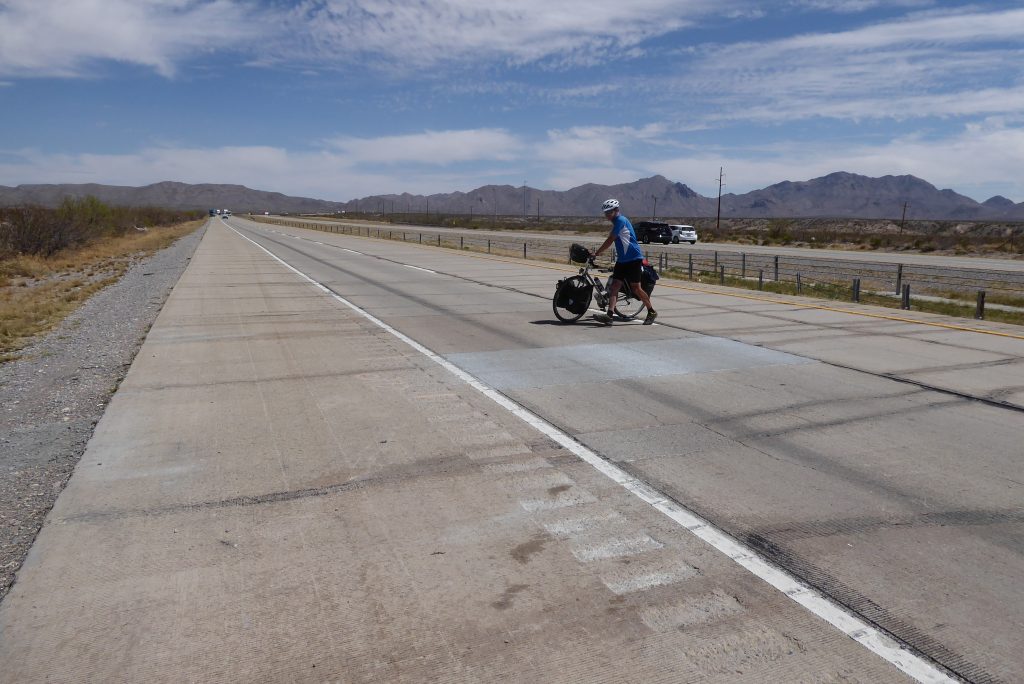
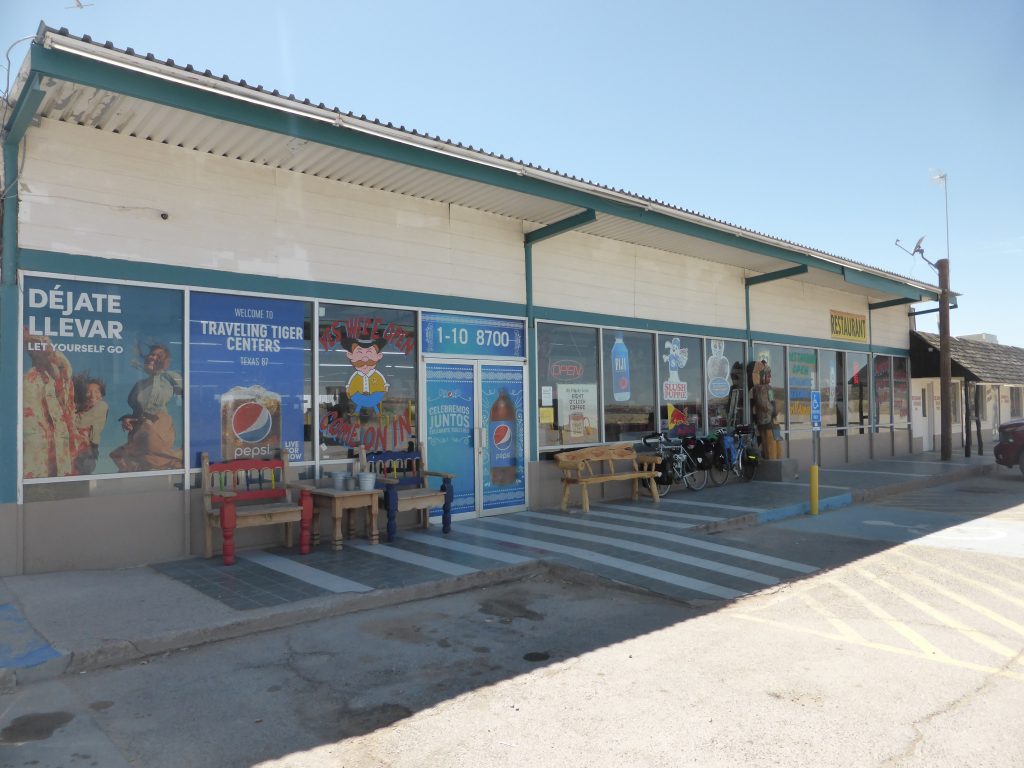
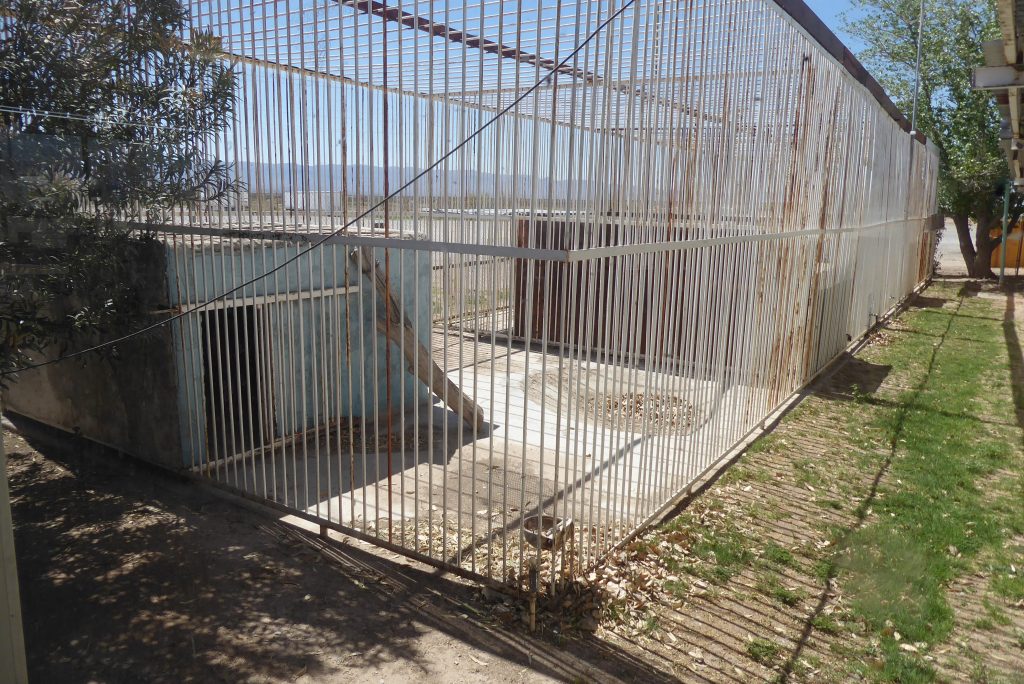
Desperate for more coffee and to get out of the heat, we stopped off at a truckstop at the junction with the 80. Rather worryingly it was called Travelling Tiger Center’s Texas 87 Branch and out back were a row of heavy duty animal cages. Fortunately if they had once been home to tigers they were long gone. It’s hard to explain how anyone would find the prospect of seeing such a magnificent beast caged in such a tiny area, roasting under the Texan sun, a good reason to stop.
A little further on we waved goodbye to the traffic altogether and cut across country on minor roads that would take us all the way to Fort Hancock. By this point of the afternoon the heat had really kicked up and, leaving the noise of the interstate behind, we really felt like we were alone in the desert. For the first time this had an appearance of a picture-book sand desert, rather than the scrubby landscape we had been travelling through. It felt even more remote than the huge empty plains.
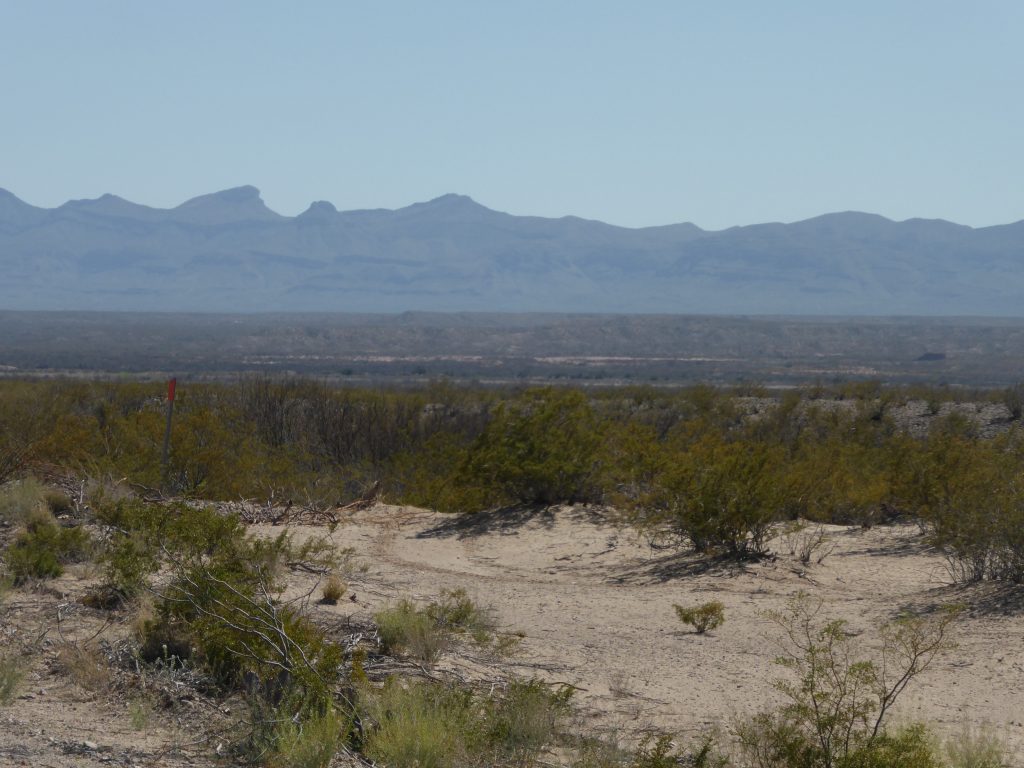
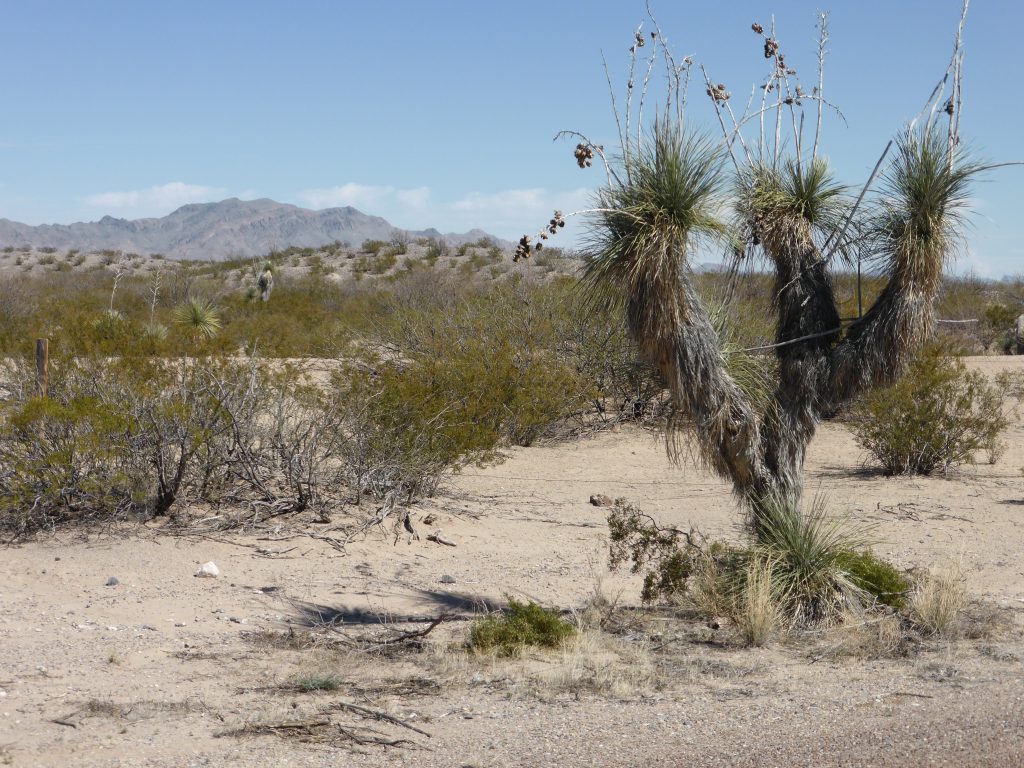
There were patches of sand on either side, the vegetation became more sparse and in the distance we could just glimpse the sparkling water of the Rio Grande, with the mountains of the Sierra Madre Oriental laying across the border in Mexico.
It seemed extraordinary that people were trying to scratch out a living on this most inhospitable of landscapes”.
The river was bringing life to this arid landscape. Crops were being planted on the flood plain and cattle being grazed, but even the slightest movement either by hoof or tractor saw clouds of dust spiralling up into the air. It seemed extraordinary that people were trying to scratch out a living on this most inhospitable of landscapes.

Passing through Esperanaza, just a mile or so from the Rio Grande it was clear the community had hit on hard times. Along with the closed down store even the US Post Office had been abandoned, something we’d never seen before. The town was now no more than a sign and a cattle pen.
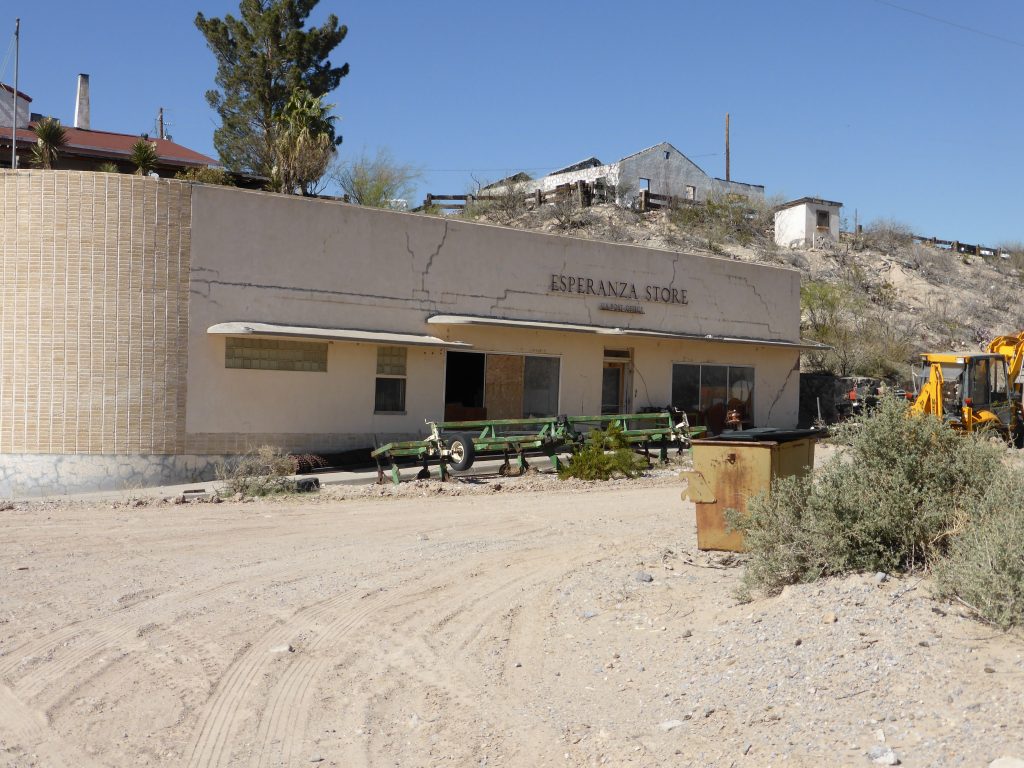
By this point Terry had pulled well ahead of me. Nothing shows up our differing speeds more than riding into wind and he’d left me in the dust. I found him huddled in the shade of a truck pumping air into his tyre which he’d discovered was losing pressure at the truckstop.

The last five or so miles, past McNary (which appeared to consist of a sparkling silver water tower and didn’t even have a cattle pen) and into Fort Hancock were hard going. By then I had cramp in both feet and the Brooks saddle was doing its best to break me.
And then, like a mirage in the late afternoon heat, as we got closer to the river, an irrigation system feeding lush fields of alfalfa next to acres of ploughed land. A thin strip of life. There were even cows and a mean looking bull. I even saw a heron and egret fly out of the irrigation channels – probably the first time we’d seen these birds since Louisiana.

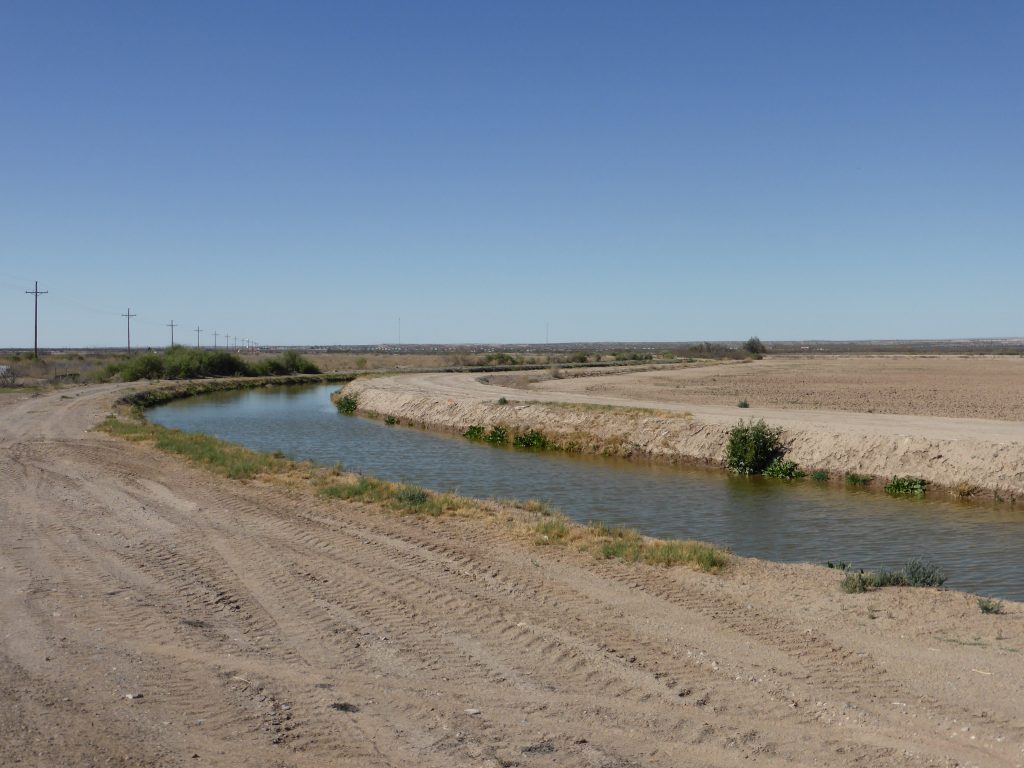
The heat was intense, bouncing back off the tarmac in a double whammy and the ground was so dry dust spouts were kicking up, clearly visible against the backdrop of the mountains. All I could think about was cracking the ring-pull on an ice-cold coke.
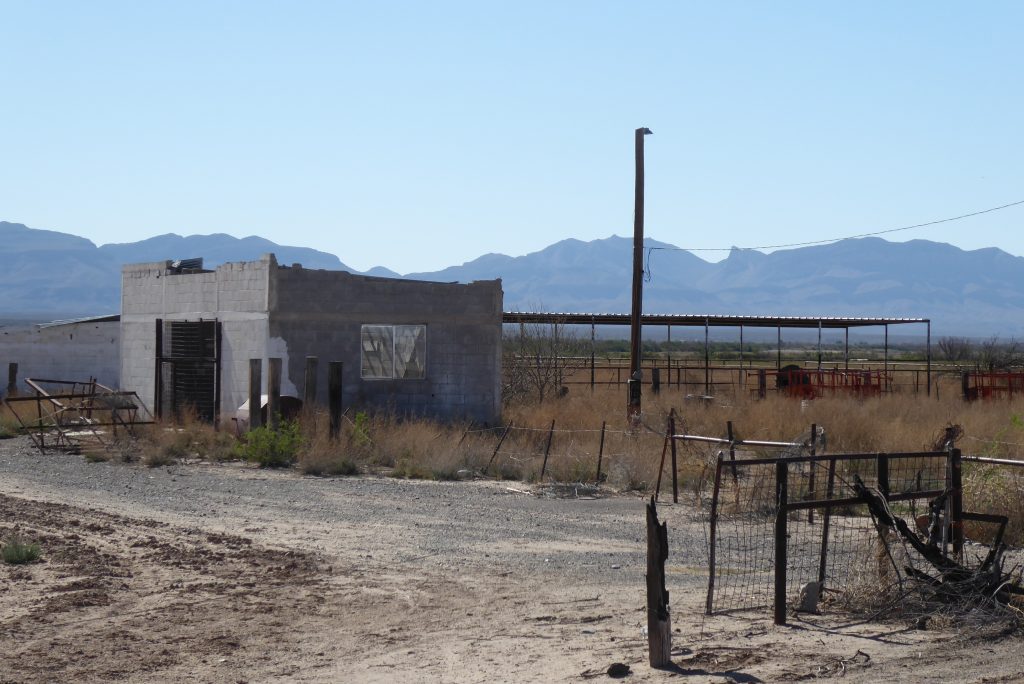
A phone call to the Fort Hancock Community Church earlier in the day had confirmed they were happy for us to stay the night – and the warden had even arranged to leave the back door unlocked so we could get in. All we had to do was make sure we locked it on the way out tomorrow. So kind, generous, trusting and downright nice!
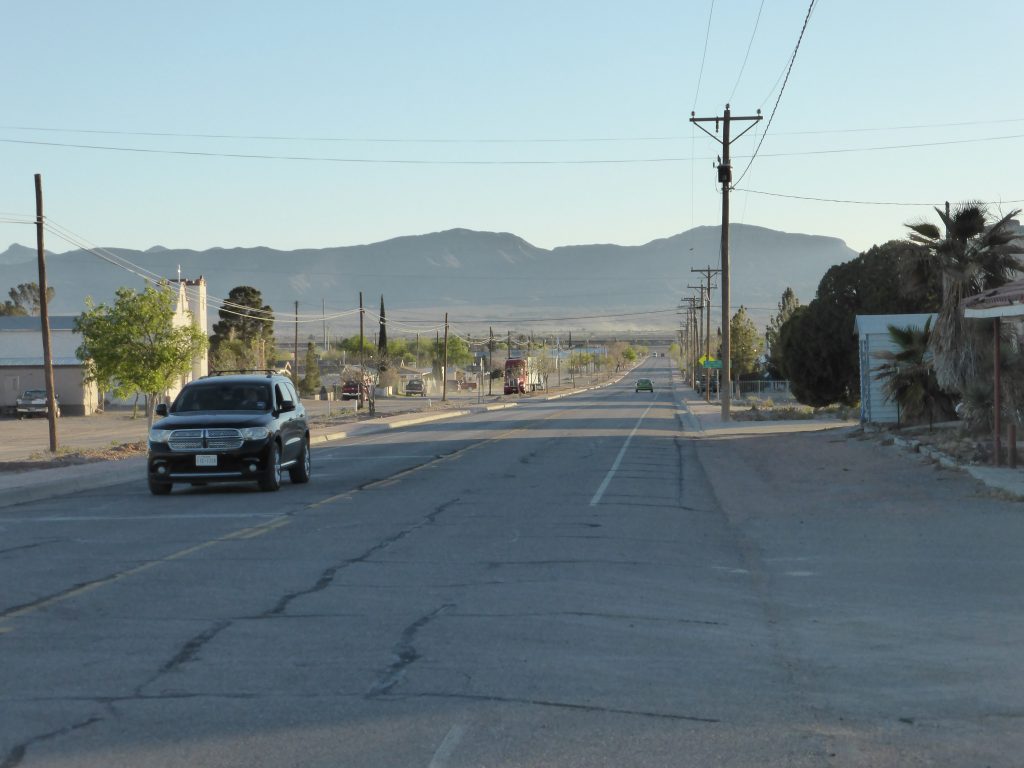
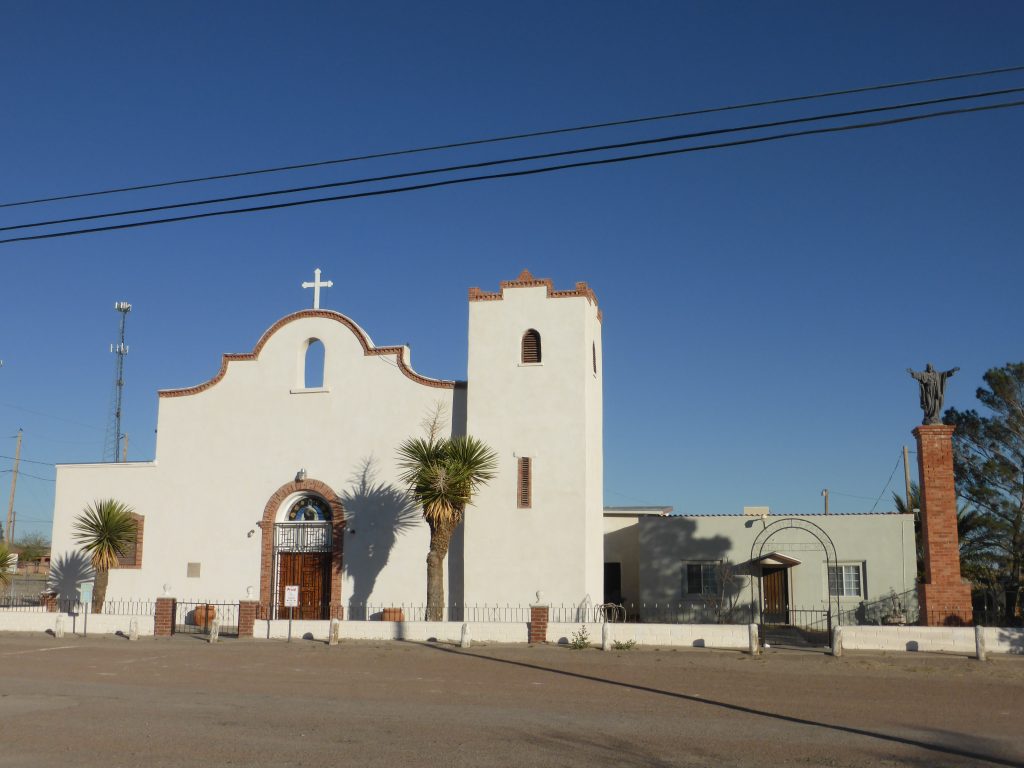
We ran a gauntlet of barking – and the occasional free-running dog – as we cycled into town, but they soon leant not to mess with two tired Brits with 73 miles behind them. After shedding our panniers we headed to the only store in town – Family Dollar – to buy up micro wave meals for dinner – and then I called in at the garage to get the long awaited cold cokes.
But not before I appeared to receive a wolf whistle from a parked truck. I can only hope it came from some smouldering Esmerelda or Maria, but knowing my luck it was probably Bob the dumpster truck driver who has a thing for men in padded cycling shorts. Let’s hope he doesn’t know where I’m staying.
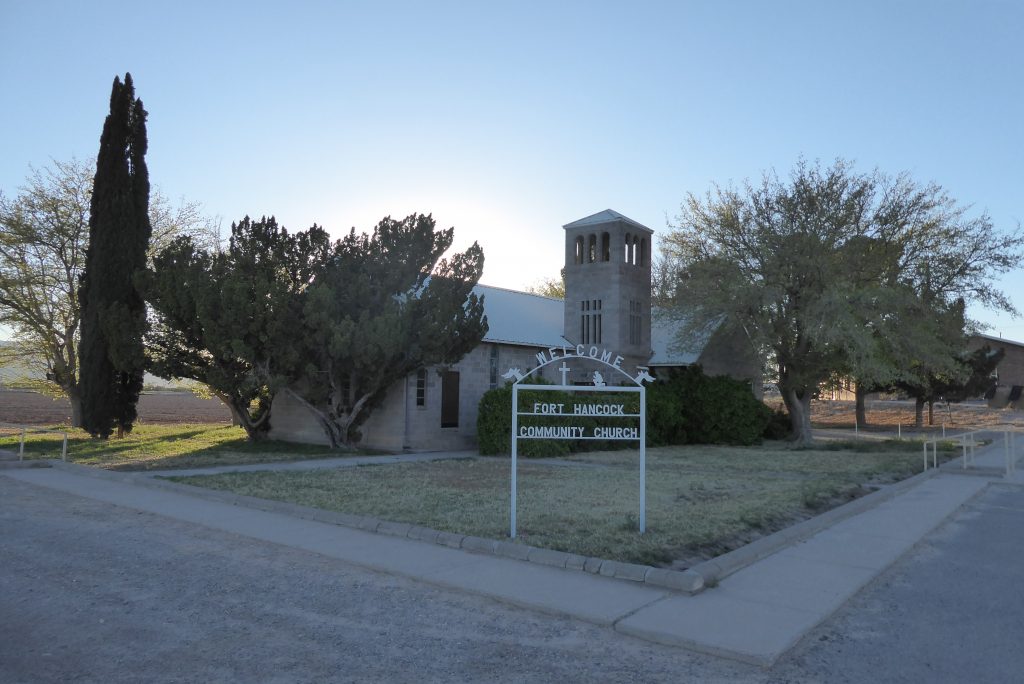

Terry’s puncture repaired, food heated and eated, teeth cleaned, stories read, it was lights out and goodnight. Oh and we passed the two thousand mile mark today!
Today’s miles: 73.41
Total miles since Anastasia State Park: 2025.60

